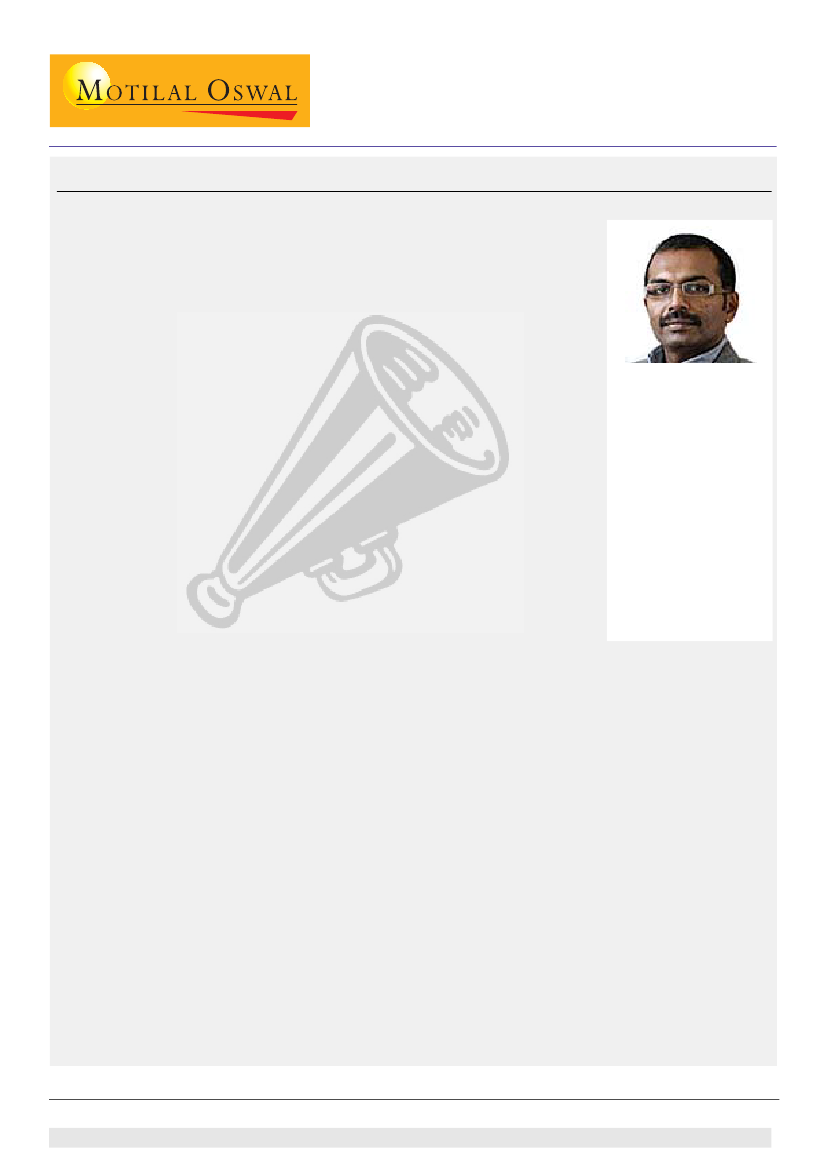
Expert Speak
BJP on upswing; could garner 200 Lok Sabha seats
The game changers - UP and Bihar
13 December 2013
Sector: Strategy
Results of the recently concluded state assembly elections highlight a strong anti-Congress
wave in the country, believes Mr Varghese K George, Hindustan Times' Political Bureau
Chief. This could benefit either the BJP or other regional/national parties in the upcoming
general elections.
In our Conference Call to get his views on the implications of the assembly election results
on national politics and the general elections, Mr Varghese pointed out that there are two
interesting trends shaping Indian politics: (1) Yearning for a strong leader, both at the
Center and States, and (2) Increasingly, different sections are voting on common grounds,
unlike earlier. Accordingly, though voter turnout is likely to be high in the upcoming general
Mr Varghese K George,
elections (as seen in the assembly elections), people are likely to vote on common grounds
Political Bureau Chief,
Hindustan Times,
rather than on caste or sect-driven issues.
oversees coverage and
The BJP could garner 200 seats in the upcoming general elections. This, Mr Varghese believes,
writes on Politics and
will be on the back of higher seats in Uttar Pradesh (UP) and Bihar, apart from the four states
Policy. Over a 10-year
where the BJP emerged victorious (clear wins in Rajasthan, Madhya Pradesh and Chattisgarh;
career, Mr Varghese has
single largest party in Delhi) in the just-concluded assembly elections. UP and Bihar could see
worked with the Indian
the BJP garnering ~70 seats out of a maximum of 120 seats (22% of total Lok Sabha seats) if
Express and Tehelka, and
elections were to happen today. Six months later, there could be changes in the political
has won several
situation, though the direction will still remain in favor of the BJP. In 2009, the BJP had won
prestigious awards. He
was selected Ramnath
a total of just 22 seats in these two states.
The BJP is likely to have pre-poll alliances with Telegu Desam Party (TDP) in Andhra Pradesh,
Goenka Journalist of the
Yeddurappa in Karnataka and Indian National Lok Dal of Haryana. However, regional parties
Year - 2006.
like AIADMK and Biju Janata Dal (BJD) might not be very keen on a pre-poll alliance with the
national parties, especially in states where the bigger parties have no or insignificant presence.
On Delhi, he admitted that most political experts had undermined the AAP wave. If re-elections are held, it is difficult to say
which party would form the government. There are two contrasting views: (1) A section of BJP voters believe that if they
knew AAP was such a force, they would have voted for AAP, and (2) A section of AAP voters believe that despite so much
effort, if AAP has not achieved majority, it is better to vote for BJP.
Strong anti-Congress wave across nation; BJP/regional parties the beneficiaries
The recently concluded five state elections saw the Congress losing the four major states. It emerged victorious
only in Mizoram. The BJP won in all these states, with Delhi being a hung assembly (BJP is the single largest
party in Delhi).
Interestingly, the Congress governments in both Rajasthan and Delhi had performed well and both the Chief
Ministers were well regarded by the public as well as opponents.
However, central issues of inflation, high interest rates and state-level corruption led to the fall of the
Congress in these states.
The national trend may not entirely be in favor of BJP, but it is definitely against the Congress. The Chief
Ministers of Madhya Pradesh and Chattisgarh may not necessarily have deserved a third term, but the anti-
Congress wave helped them to tide over.
The dominant thought is that the BJP will form the next Central Government but there is a very remote
possibility of smaller parties like the Left, BSP, etc, coming together with support from the Congress to keep
the BJP out of power. A Congress-led government looks very unlikely.
Ashish Gupta
(Ashish.Gupta@MotilalOswal.com); +91 22 3982 5544
Investors are advised to refer through disclosures made at the end of the Research Report.
1